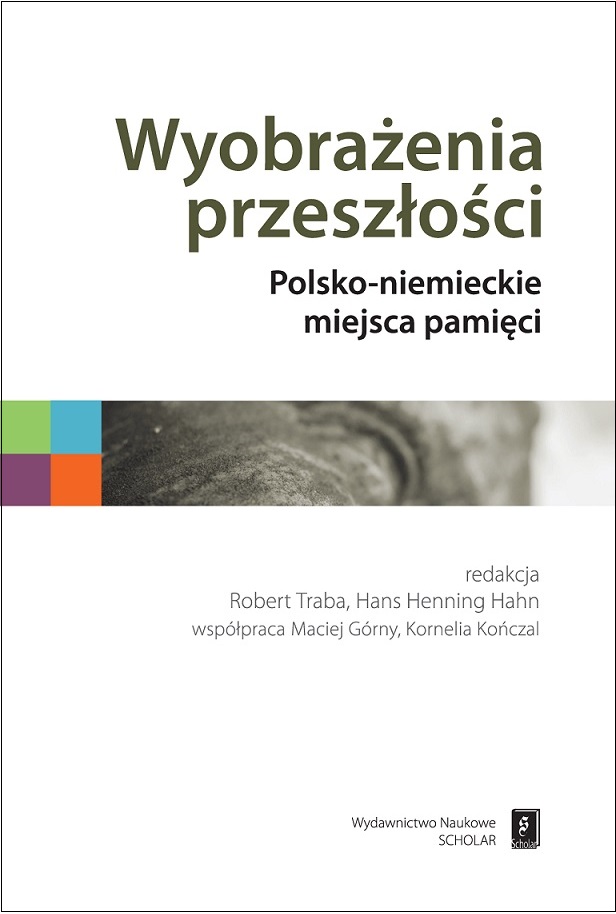
We kindly inform you that, as long as the subject affiliation of our 300.000+ articles is in progress, you might get unsufficient or no results on your third level or second level search. In this case, please broaden your search criteria.

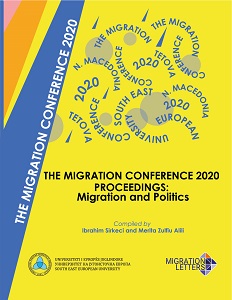
Over the years there have been presentations of many research-works on the so-called “migration and development nexus” with several schools of thought contributing significantly towards the concept as far as the theoretical framework is concerned. In particular, the New Economic Labour of Migration (NELM) stresses on the impact of financial remittances (an aspect of migration) and how it serves as an insurance for most family members. Significantly, there have been several statistical data from the World Bank which highlight on the role of remittance and how it could be a poverty alleviation tool. Whilst these assumptions and theoretical underpinnings seem to argue in favour of how migration could be a contributor to development and poverty reduction, evidence from the grounds seem to suggest quite a worrying situation. Indeed, we cannot discuss development robustly without shedding light on inequality. Thus, the inequality gap between the rich and poor as well as the monumental regional development gap keep widening as the beneficiary of remittances are normally those within the middle and upper class and the places where these live. With reference to Ghana as a case study, the prime focus of this paper discusses how migrants’ remittance is contributing towards inequality in Ghana. To address this issue, this paper is structured into two main parts. The first part discusses statistical data on remittances to Ghana with a review on the theoretical framework on the consequences of migration. The second part delve into the issue of inequality and the role of remittances, discussing options for a better future, with higher levels of social justice.
More...
İnsanı, diğer varlıkların üzerinde istisnai bir özne olarak gören Hümanist bakışa tepki olarak doğan posthümanist düşünce, insanın varoluşsal kimliğini sorgular. Edebiyat, sosyoloji, felsefe, siyaset bilimi ve medya çalışmaları gibi birçok disiplinle ilintili olan Posthümanizm, insana dair yeni bir anlayış getirir: insan artık Hümanizm’in parolası olan ‘bütün şeylerin ölçüsü’1 ve efendisi değil, evrenin sıradan ve mütevazı bir üyesidir. Hümanizmanın sorgulanması Friedrich Nietzsche ve Max Stirner gibi felsefecilerle 19. yüzyıla kadar götürülebilir; ancak toplumsal karşılığını bulması, İkinci Dünya Savaşı’ndan sonra özellikle de altmışlı yıllarda, feminizm ve ırkçılık karşıtlığı gibi hareketlerle birlikte postmodernitenin kendini göstermesiyle gerçekleşir. “Bu hareketler Batı demokrasisi, liberal bireycilik ve herkes için sağlandığı iddia edilen özgürlüğe dayalı Soğuk Savaş belagatinin yavanlığına meydan okumuştu” (Braidotti 27). Bunundevamında seksenli yıllardan itibaren ortaya çıkan Hümanizma karşıtı fikirler bileşkesi olan Posthümanizm, insanların Rönesans’tan beri etik anlayışların tek yapıcısı, temsilcisi ve uygulayıcısı olduğu kavramına karşı çıkar. “Aslında Posthümanistler, teknoloji yönelimli geleceğimizde dünyayı ahlaki bir hiyerarşi olarak anlamanın ve insanı da bunun tepesine yerleştirmenin artık bir anlamı olmadığını iddia ederler” (ethics).
More...
Rönesans ve sonrasında Batı düşüncesinde etkin bir felsefi söylem olarak kendine yer edinen Hümanizm, Orta Çağ Hristiyanlığının “Tanrı merkezli bir varlık ve toplum tasavvuru” (Evkuran 39) olan teosentrik dünya görüşünün reddedildiği ve odağını Tanrı’dan insana kaydıran “homosentrik paradigmayı”1(Best ve Keller 180) ifade etmektedir. Nicola Abbagnon’un tanımlamasıyla “hümanizm insanın değerini kabul eden; onu her şeyin ölçütü olarak tanımlayan, insanın doğasını, yetilerinin ölçüsünü (sınırlarını) ya da ilgilerini konu edinen bir felsefedir” (763). Aydınlanma ve Modernite ile birlikte düşünsel zirvesine ulaşan hümanizm, insanları Tanrı’nın vesayetinden kurtararak, seküler değerlerin benimsenmesini, teknolojik egemenliği ve bilimsel akılcılığı teşvik eder. “Batı medeniyetinin seküler ve rasyonel doğrularını bariz bir şekilde yansıtan” (Davies 9) hümanizm, insan-dışı yaşam biçimlerinde olmadığını iddia ettiği temel bir insan özünde ısrar eder. Dolayısıyla, hümanizm ve ona eşlik eden kapitalist düzen Ben / Öteki, Erkek / Kadın, Doğal / Yapay, İnsan / İnsan Olmayan vb. ikili karşıtlar yaratır. Egemen aklın öznesine dayanan bu karşıtlıklar posthümanist söylemde eleştirilmektedir. Çeşitli anlam kalıplarına açık, “birden fazla ve birbiri içine geçmiş” (Ağın 1) anlamlara sahip bir kavram olan posthümanizm, hümanist söylemin iddialarını kabullenmeyi reddederek, hümanizmin hegemonyasına meydan okumayı ve onu dönüştürmeyi amaçlayan bir dizi eleştirel söylemler bütünüdür. Gülnur Güvenç’e göre “posthümanizm, hümanizmin neden olduğu bunalımları açıklayan, düzenleyen veya bunlarla başa çıkmaya yönelik fikirler içeren bir şemsiye terim olarak kabul edilir” (49). İkili karşıtlıkları aşma yönünde, insanı fiziksel ve ontolojik olarak değişime uğratan gelişmiş teknoloji kültürüne posthümanizm de özel bir önem atfetmektedir. Posthümanizmin doğayı ve ekolojiyi de kapsayan tekno-bilimsel felsefesi, artık saf olmayan ve teknolojiyle dönüştürülmüş özneler üzerinde durmaktadır. Andy Miah’ın da belirttiği gibi, “teknolojik değişim posthümanizmin çağdaş temsillerinin bir merkezi haline gelmiştir” (271). Bu atfedilen tekno-kültürde organik ve doğal olmayan “insan/makine, hayvan/organizma/insan, fiziksel/fiziksel-olmayan melez” dönüşümler gibi “posthuman’daki ‘post’ ön eki insanın sınırlarını aşan hem ‘sonra’ hem de ‘öte’ anlamını işaret eder” (Buran 126). Bu bağlamda posthümanizm insanın tarihsel bir eleştirisinden yola çıkarak hümanizm sonrası döneme önceliğini verir ve teknolojinin dönüştürücü etkisini de göz önünde bulundurur (Yeşilyurt 9). Anti-hümanist, feminist ve postmodern düşünürlerin fikirleri ekseninde gelişen posthümanizmin özünde yatan niyet, hümanizmin insanlığa dayattığı totaliter büyük anlatıları parçalayarak, onları çeşitlilik ve akışkanlık fikirleriyle değiştirmektir. Bu özellikleriyle posthümanizm klasik hümanist kavramların eleştirisini yapan, yüksek teknoloji kültürünün dönüştürücügücüne vurgu yapan postmodern bir düşünce olarak da kabul edilebilir.
More...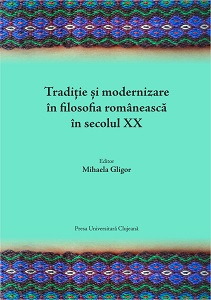
In this chapter I will discuss the role that Mircea Eliade had, as an exponent of the generation, in the interwar Romanian culture in general and the humanist thinking in particular, under two challenges, the historical and the political. Between the two tendencies crystallized in the Romanian interwar period, philosophical universalism and autochthonism, Mircea Eliade intuits that, after the achievement of the national unity on December 1, 1918, the Romanian culture must assume a new direction. Between the first tendency, which understood that the specificity of modernity lies in the universality of truth beyond the national specificity, and the second interested in deciphering the "Romanian vein" in the cultural and philosophical capitalization of ethnicity, Eliade projects the destiny of national culture in the universal dimension, considering that Romania's destiny must be a cultural one, and our cultural modernity should by represented by the "universal man". Eliade's project, perhaps, was doomed to failure or had a partial and unfinished character, and modernity understood as cultural universalization was only the awareness of a trend that, under the "terror of history", did not materialize. But he became a personal project that Mircea Eliade assumed through the hermeneutics of the world's religions and the understanding of homo religiosus and "total man".
More...
In an attempt to capture the beginnings of modernity in Mircea Florian's philosophy (and, implicitly, in Romanian philosophy in the twentieth century) we start from the philosophy of recessiveness developed by the Romanian thinker and discuss, for a start, the relationship between philosophy and nation, on the one hand , and the relationship between Romanian philosophy and universal philosophy, on the other hand. In both cases, the recessive ratio indicates a duality. Philosophy means infinity, generality, totality, and the nation expresses the essence, the real, the individual. The dominant term is philosophy, and the nation is recessive. Mircea Florian accentuated the state of Romanian philosophy through a series of rules of philosophical conduct, thus affirming its autonomy from other fields of spirit and recognizing its existence in a national context.
More...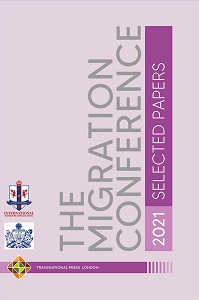
Mexico-United States migration research rarely use the concept migrancy and migration analysis has often used migrancy “out of context”. By reviewing the usages of migrancy, I argue that migrancy is better understood as the embodiment of the experience of migration. I reason that the experience of migration is best captured through intersectional analysis. By addressing gender, ethnicity and class, migrancy can recapture migrant agency and bridge the gap between micro and macro analysis. Within the Mexico-United States migratory field, I argue that migrancy is a powerful concept that addresses the structuring forces that shape migrant experiences without sacrificing migrant agency.
More...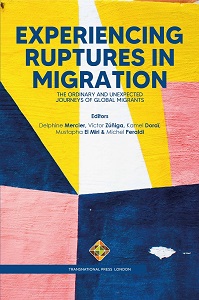
Ayoub and Malika Amrani are husband and wife, former farm workerswho, for many years, came to France on OMI contracts to do seasonal work for a farmer in the Bouches-du-Rhône area. In the early 1970s, the young woman’s father and uncle, fellahs2from the Moroccan Prerif who had emigrated to the city, found a contract in the city of Grans, on the Crau plain, and gradually “sponsored” the next generation of migrants. In 1990, when Malika was recruited to join them, there were about ten family members already working on the farm. Though she was formally employed as a farm worker, she actually worked as a “servant” for the farmer and his family. Against the advice of her employer, who wanted nothing to distract her from her work, she got married and held a big wedding in Fez, to which her employer was invited. Ayoub, her husband, was recruited to work in the orchards. As a newlywed, Malika had more and more trouble accepting the abuse and bullying her parents had endured until then. She became increasingly opposed to her employer. 2000 marked a breaking point, when Ayoub fell from an apple tree and was seriously injured. His pelvis was fractured. Their employer was reluctant to report it as a work-related accident. The couple stood up to him, and the following year, none of the family’s contracts were renewed. It was a form of retaliation. It was a collective punishment, as if to remind the migrants that they were bound to their employer by the same duty of loyalty. This incident would have lasting consequences on Malika’s relationship with her family, who accused her of being selfish. In the meantime, Malika became a prominent figure in the movement to defend seasonal migrants’ rights, almost in spite of herself. Her story was the subject of several articles in the media and was taken up by the Collectif de défense des travailleurs agricoles saisonniers (Collective for the Defense of Seasonal Agricultural Workers) (CODETRAS).
More...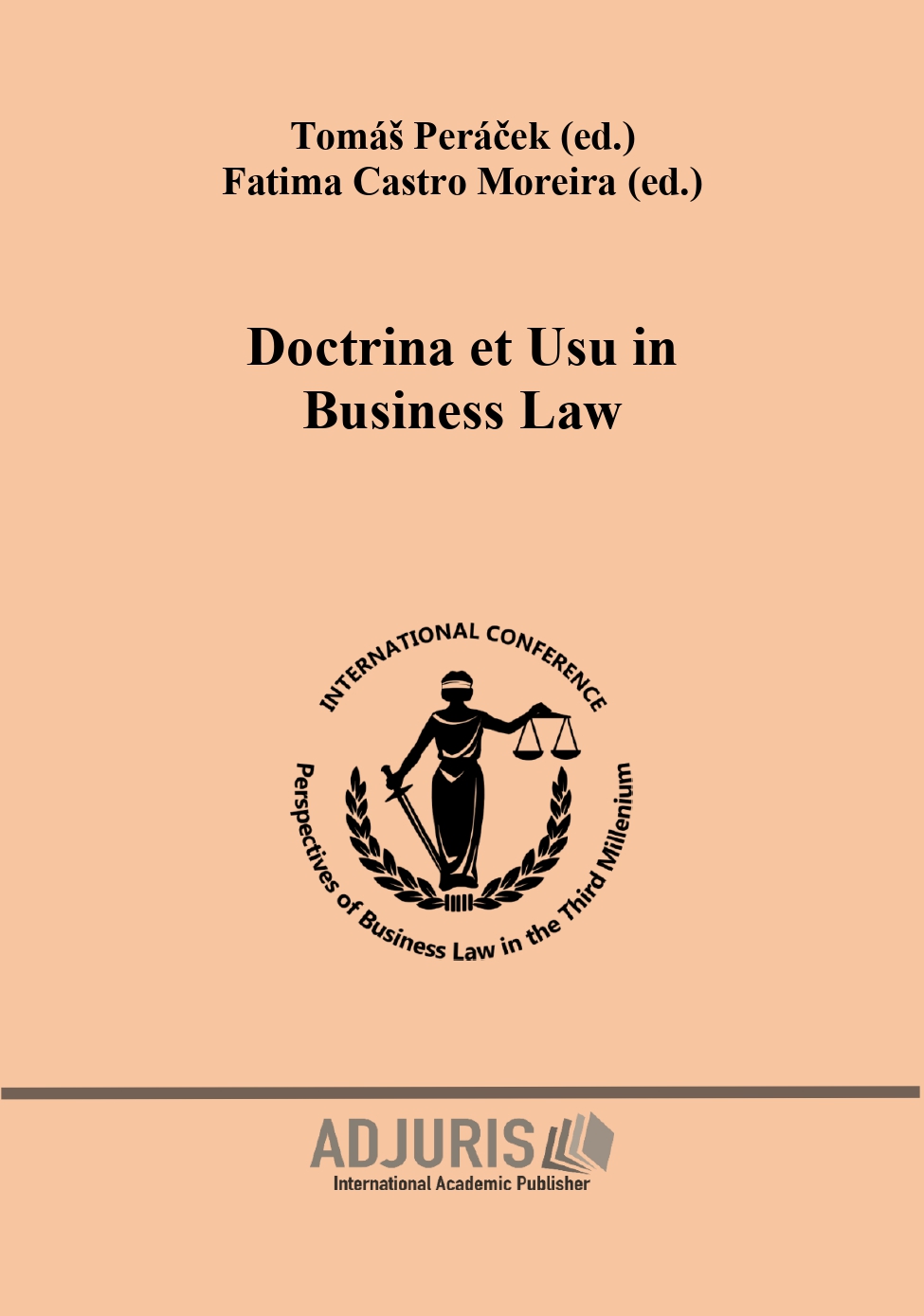
The work aims to offer an objective, even critical analysis of Law no. 151 of 20152 regarding the insolvency of natural persons. This regulation, entered into force on 01.01.2018, ̋celebrates ̋ 5 years of application, which is why I approached this topic with the intention of a general analysis of the provisions of the Insolvency Law of natural persons and to offer my own conclusions regarding this topic. I will analyze, in the first part of the paper, the general provision regarding the notion of insolvency, the conditions imposed by law for the initiation of this procedure, as well as the options that Law no.151/2015 makes available to the insolvent debtor depending on his legal situation. In the second part of the paper, I will analyze a series of debatable aspects that the law refers to, and I will assess the usefulness and opportunity of their regulation. The conclusions will try to offer some legislative proposals that will make this law more well-known and approachable for natural debtors in a state of insolvency. Carrying out the scientific approach, I will use different methods of interpretation, starting from the grammatical one and reaching the method of quantitative and comparative analysis.
More...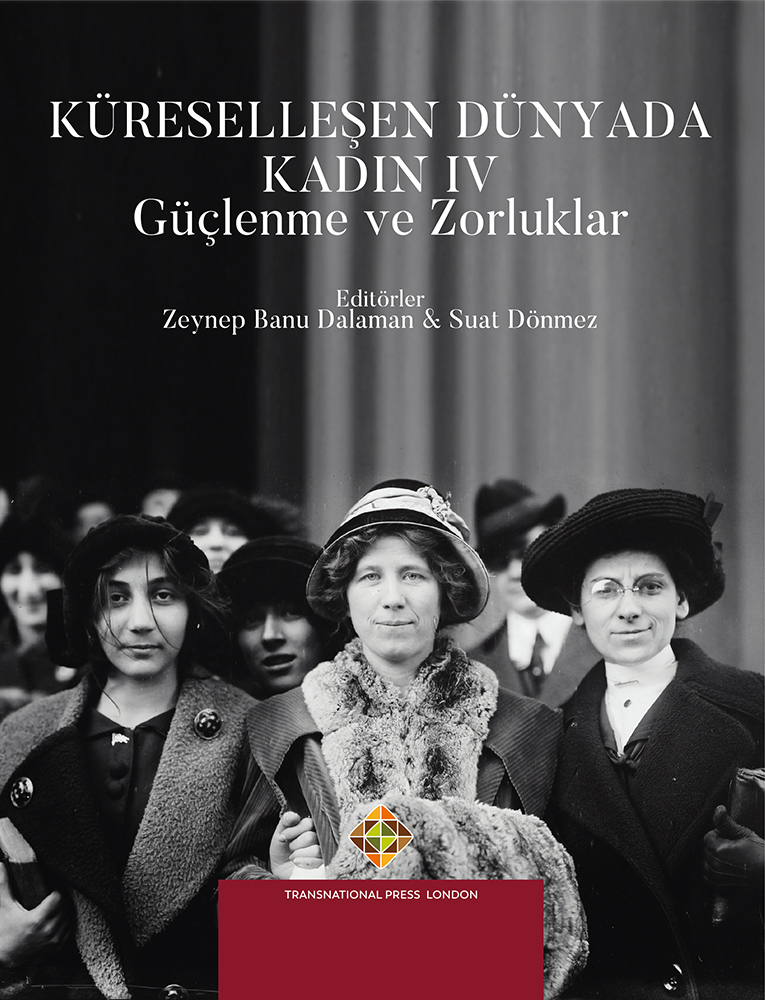
The goal of the Development Plans is to develop targets and tools to ensure a balanced distribution of all resources, economic activities and human capital of countries for economic and social development. With the policy objectives prioritized in the context of Development Plans, it is aimed to ensure and maintain economic development by building high welfare societies across the country with egalitarian policies. In the process of creating Development Plans, some groups and special areas should be supported with effective tools, with policies defined in an equal and fair manner for all segments of the society. At the beginning of these groups is the title of women. Especially in the context of the place of women in development, discussions continue from many different perspectives from the 1970s. Within the framework of the study, first of all, theoretical and conceptual explanations will be given about which paradigms and Feminist tradition processes the title of “women’s empowerment” is handled. Afterwards, the development plan tradition and the perspectives and paradigms of women’s empowerment in the preparation process will be mentioned. In particular, in the topics of empowerment and women, the approach that evolves into empowerment, strengthening and participation will be discussed and the transformation of the paradigm will be included. In this study, in terms of form and content, the background of which goals and paradigms are discussed under the title of “women’s empowerment”, which is considered to be one of the special areas that should be supported in the process of preparing the current development plans in the tradition of the Development Plan in Turkey. In this context, the current paradigm and its effects will be evaluated by analyzing the development plans separately. In the last part of the study, the positive and deficient aspects of the women’s empowerment approach are also discussed within the framework of Turkey’s Development Plan perspective.
More...
In parallel with the developments in the world and the phenomenon of globalization, social, cultural and technological changes have occurred and societies have evolved. However, unfortunately, despite many changes, perceptions and perspectives towards women in a patriarchal society have not changed. Therefore, women could not take a step forward in society and were forced to live in the background. This situation also confronted women when they wanted to enter the labor market. Despite the importance of women in economic development and in the workforce, the perceptions that they are seen as a secondary workforce and that they should work only in case of economic difficulties are reflected in the rates in the workforce. However, economic development is one of the important problems for the welfare of a country. In order to solve this problem, it is a critical point to focus on women employment for countries. However, the rates in Turkey show that female employment is very low compared to male employment in every field. In this study, the employment status of women is evaluated according to education, sector, occupation, unregistered employment and marital status by using literature review and Turkish Statistical Institute (TUIK) data. In addition, the problems faced by women in employment, such as gendered perspective, occupational discrimination, inequality in remuneration, insufficient educational opportunities, lack of career development opportunities, mobbing (psychological harassment) and sexual harassment are included. In the results section, suggestions were made to increase women employment.
More...
The feminist theory essentially stands against the subordination of women vis-à-vis men, acknowledging that the lives of women and men, be it in the social, economic, political, or cultural sense, are shaped by the roles traditionally attributed to men and women and their distinct placements, positions, pursuits, etc. in society. Against this backdrop, the women’s movement, owing to its historically dynamic developments in scope and content, has urged authors to examine some long-neglected issues from the gender perspective. Among them is geography, which has been a topic of study for feminist theorists, researchers, and writers since the 1970s especially along with the advent of second-wave feminism. Owing to this background, building on the gender perspective to position women as the primary subject in geography has become a current, albeit long-hidden, pursuit in social sciences. In this context, criticisms of the classical restriction of women to certain spaces within the framework of the separation of public and private spaces have added visibility to discussions concerning the genders of geographies or spaces. The dynamic nature of geography in general and of spaces more specifically also points to how space and gender interact, shape, and transform each other. In fact, all interactions that guide women’s daily lives including actions, pursuits of existence, etc., happen within the confines of space and perceptions of such spaces also shape the role of women in society.
More...
Today’s humanitarian and environmental crises have revealed how important the mind/nature opposition can be. Dualisms male/female, mind/body, public/private, production/reproduction, which are the cornerstones of male culture, legitimize the underestimation and domination of nature. Opposing these dualisms, which render the sustainability action thought as an optimistic way out for ecological problems unsustainable, revealed the struggle for ecofeminism. Generally, ecofeminism advocates a combination of all systems of oppression that marginalize communities in terms of class, gender and race throughout the definition of rights and responsibilities, access to ecological information and decision-making processes. Within this framework, the objective of this study is to focus on how gender affects ecological processes while underlining that the social sustainability is at least as important as building technologies in space production. Here, the domestic space is the basic research sample and gender refers to the processes where identities are produced rather than gender roles. The study recommends the idea of collective living which enables the reconstruction of gender identities by publicizing the care-related part of domestic labor. To this end, a qualitative analysis was made of four examples of collective living projects that meet the preconditions of sustainability-equal participation. These samples, which carefully consider the concepts of labor and care, aim to enable ecological reform as well as social, economic and political reform.
More...
Posters are of great importance in the cinema industry all over the world. The posters on which the film markets itself and allows it to spread widely are also a for profit investment for the producers. In addition to being for profit, posters, which assume art and design value, also contain written and visual elements in their content and provide information transfer to the audience with the method of editing from an aesthetic point of view.It is possible to make out how this transmission contains messages and what meanings it contains with the method of indicative scientific solution.It is feasible to define semiotics as an interdisciplinary science based on the interpretation and interpretation of symbols, shapes and symbols. In this context, the aim of the research is to analyze the messages intended to be given on the posters by using semiotic analysis of movie posters.The universe of the research consists of movie posters. 5 movie posters with period costumes were included in the sampling by the method of judicial sampling from the universe and their analysis was carried out. In this context, the aim of the research is to analyze the messages intended to be given on the posters by using semiotic analysis of movie posters.It is also important to understand what is shown beyond what is seen in semiotics and to interpret those meanings. For this reason, in the study, the images shown in the poster are explained and the meanings attached to them are revealed. In the analysis of the posters, the method of straight meaning and side meaning, which is the method applied by Barthes in semiotics, was used.The research is qualitative research and has a scanning model.
More...
Questioning traditional patriarchal reality and concept of gender in her versatile novels ranging from science fiction to ecology, fairy tales to postmodernism, Jeanette Winterson (1959-), one of the most prominent British writers of today, criticizes capitalism, totalitarian governments, colonialism, and consumer culture alongside patriarchal society which she regards as the main cause of these ideological systems. The concept of reality shaped by men, which is at the target of Winterson, famous for her feminist perspective, is kneaded with humor and examined in the context of historical reality, gender, sexuality, and identity. Winterson wrote The Stone Gods, the subject of this paper, in 2007, and produced a peerless work by amalgamating her stance against patriarchal discourse with a postmodern and ecocritical approach. Particularly in the second part of the novel, which takes place on Easter Island, Winterson depicts how the environment is destroyed through the power struggle among patriarchal tribes. Nature has become unable to give life to human beings due to the patriarchal administration. When two feuding tribal chiefs cut down the last tree on the island, ecological death on the island, that is the death of human beings in a symbolic sense, comes true. Women who want to prevent this destruction are met with violence by men. In other words, Winterson highlights a gender-driven and nature-destroying hierarchy of power. This hierarchy is directly related to ecofeminism and the social position of women. In this context, this paper aims to examine the nature, woman/man, and power relations in Winterson’s novel The Stone Gods with an ecofeminist lens.
More...
Meddah is a masculine tradition. This theatre tradition has emerged in the Ottoman period, from the 17th century onwards. It is a genre in which the meddah synthesises the skills of imitation and narration of a story. How can meddah, a masculine tradition, be modernised today? Or can meddah be shared with the audience by an actress? In societies where women are side by side with men in social life, the tradition of meddah, a masculine genre, can and should be undertaken by actresses. Based on this aim, after analysing meddah as a traditional genre, two plays were studied and shared with the audience as an application method. One of these plays is a one-person documentary play that Prof. Dr. Nurhan Tekerek edited-directed-performed from Zeynep Oral’s book “Kadın Olmak”: “Kadın Olmak- Being a Woman, the other is the text “Zilli Şıh- Shake with Bells” written by Haşmet Zeybek and directed and acted by Prof. Dr. Nurhan Tekerek. “Kadın Olmak” was created by blending the stories and poems of oppressed women from different cultures who participated in the “World Women’s Meeting” held in Nairobi in 1985. In the staging, the tradition of Meddah has been modernized. To highlight the documentary feature of the play, the play was coloured with images of war, productive women from inside and outside the book, and music. “Zilli Şıh,” a meddah story written by Haşmet Zeybek and directed and acted by Prof. Dr. Nurhan Tekerek, conceived in the eighties, has been presented to the audience since 2005. The narratives presented by male meddahs in the Ottoman period to an audience consisting solely of men were, this time, performed by an actress and shared with a heterogeneous audience. After both plays, it was concluded that the tradition of meddah, a masculine tradition, should not be approached from a sexist perspective today and that an actress can now exist in the world of theatre as a meddah. Therefore, meddah is an important source that we can benefit from today by modernising it without sexist discrimination.
More...
The Ottoman Empire, which started in the military field and came under the influence of the West in all cultural circles, lived its deepest area of influence in the economic field. While the Western states were turning to the Ottomans, the Ottomans, being aware of their backwardness, turned to the West. In this encounter, the Ottoman Empire entered into an economic order that changed over time, and the production-consumption relations were transformed as well as the changes in the fields of education, health, entertainment, science and art. The reasons such as the Ottoman entry into wars one after another, the decrease in the number of men, and the instability in the economy accelerated women’s entry into business life at the beginning of the twentieth century, when they began to show themselves. The modern Turkish woman, who successfully proved herself in the “men’s world” since 1908, continued to show her presence after 1923.The social truths of the period are also reflected in the novels. After 1923, the demand for female employees in banks and various companies led to the birth of “typewriter girls”. This type has found a great place in Atatürk Era novels. In this study, the reflections of the typewriter girls in the novels were compared with the realities of the period, and thus, the place of the women of the Atatürk Age in both literature and working life was seen, and where the Republican woman came from in her working life was determined.
More...
Numerous empirical studies on television, the most widely used mass media today, have shown that television viewing has a significant impact on viewers’ conceptualizations of social reality, gender role attitudes and gender-based behaviors. Therefore, the definition of women provided by television content has a social significance. However, in recent years, the increasing popularity of video-on-demand (VOD) platforms has threatened the long-standing dominance of television, and thus viewing habits are rapidly shifting towards these platforms. However, there are no studies in Turkey that address gender representations in the context of these platforms. In this context, the subject of this study is the gender representations in the “original” series of Netflix, which has the highest number of users among these platforms. Accordingly, the gender representations presented in 107 episodes, which constitute the entire first seasons of 14 original Turkish-made series released on Netflix from 2018 to 2023, were subjected to content analysis. The results obtained were compared with previous basic studies on this subject in the context of television series. The findings revealed that, just like in television series, women are significantly underrepresented compared to men, they are usually characterized in supporting roles, these characters, who are mostly positioned as housewives, are isolated from working life, and that the predominance of female actors such as producers/directors/screenwriters involved in the series production process does not have any effect on gender representations and positive stereotyping. In other words, although Netflix seems to be a carrier of democratic representation with its innovative and libertarian discourses, it continues to tell stories specific to television. The results obtained are discussed in the context of communication scientist George Gerbner’s upbringing theory and feminist theories.
More...
One of the most important steps toward devaluing domestic labor is to make it invisible. Women are seen as responsible for housework and care work due to the naturalization of gender roles, which is another reason why labor is devalued. Even when women do these jobs for money, they are still worthless. The discourse of love is the main reason why this relationship can continue despite the invisibility and devaluation of women’s labor. Because these jobs are done in the name of love in the family, it is difficult for women to refuse work and present it as a political issue. The appearance of domestic labor, which is divided unequally between men and women due to gender inequality, will be discussed in this study using examples from recent cinema from Turkey. In addition to domestic labor discussions on the unequal division of labor, materialist feminists’ analyses of patriarchal capitalism, and in this context, discussions on unpaid domestic labor, will be included. The form and possibilities of invisible labor becoming visible in cinema will be the primary focus of the research.
More...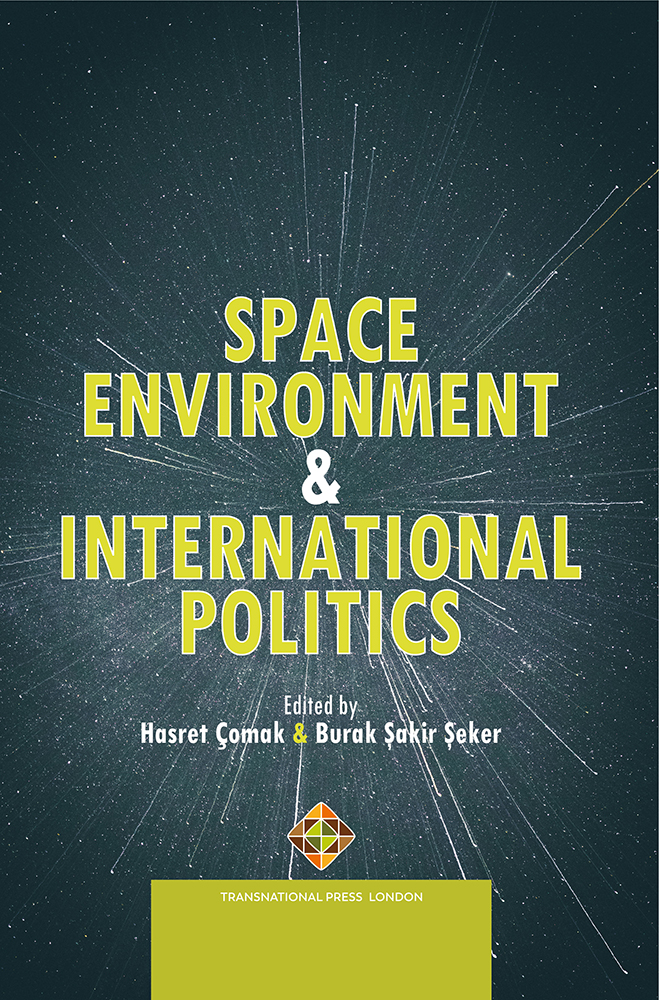
When the space age started during the Cold War, two sides of the Cold War have dominated the space actions for a long time. Space has of course been considered as a means to advance security and decrease security of the adversary regarding the atmosphere of the Cold War. That’s why for a long-time space security have been defined as a state’s ability to place assets to space without being interfered. But today there is much more complex situation in the space when we consider that states, international organizations and even individuals are doing space experiments and launching many objects to space which makes the space more crowded. That’s why today we are in need of wider approaches rather than only military based ones in order to explain the complicated situation of space.
More...